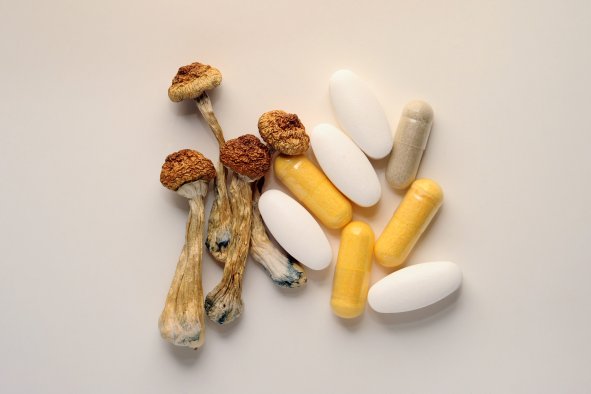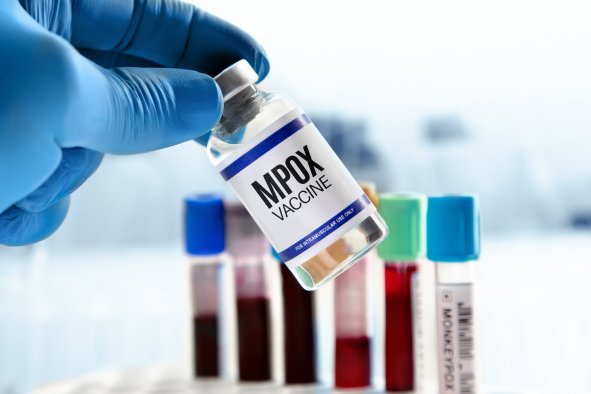Data has shown girls around the world have begun starting puberty earlier, and a new study suggests this might be because of exposure to toxic chemicals.
Early puberty is associated with an increased risk of multiple conditions, from psychosocial problems to physical diseases such as obesity, diabetes, heart disease and breast cancer.
It has previously been suggested that a recent rise in early puberty among girls may be due to exposure to endocrine-disrupting chemicals (EDCs): substances which interfere with hormones in the body.
But a study published in scientific journal Endocrinology on Tuesday has identified two chemicals that they believe could act as EDCs and prompt puberty to start early in girls.
"We conducted a comprehensive screen of 10,000 environmental compounds with extensive follow-up studies using human brain cells that control the reproductive axis, and our team identified several substances that may contribute to early puberty in girls," said study author Dr. Natalie Shaw, from the National Institutes of Health (NIH), in a statement.
The substances identified by scientists in this study include musk ambrette, which is used as a fragrance in some detergents, perfumes and personal care products.
Some studies in rats have suggested this chemical can cross the barrier between the blood and the brain and could cause damage.
The Food and Drug Administration (FDA) has removed musk ambrette from its "generally recognized as safe" list, and regulations in Canada and Europe restrict its use citing its potential toxicity.
However, musk ambrette remains in commercially available in a number of products, and scientists expressed concern about the likelihood that children may encounter it in their daily lives.
"This study suggests that, out of an abundance of caution, it is important for parents to only use personal care products for their children that are federally regulated," said Shaw in a statement.
Medications called cholinergic agonists were also identified by scientists as EDCs that could prompt an earlier puberty, but scientists said that children were less likely to come into contact with these.
The research team screened a library of 10,000 compounds, including licensed pharmaceuticals, environmental chemicals, and dietary supplements, and tested how some of them interacted with human hormones.
Puberty is controlled by a network of neurons releasing gonadotropin-releasing hormone (GnRH).
When GnRH is released, other hormones follow, including follicle-stimulating hormone and luteinizing hormone—key reproductive hormones that signal for the ovaries to release estrogen, and for puberty to begin.
Scientists are not sure exactly why GnRH is released when it is, for puberty to begin, but they have identified another compound which they believe plays a key role: kisspeptin, thought to stimulate GnRH, and believed to respond to environmental cues.
Scientists suggested in this study that substances such as musk ambrette and cholinergic agonists may prompt an early puberty by interfering with GnRH and kisspeptin receptors.
"More research is needed to confirm our findings," said Shaw. "But the ability of these compounds to simulate key receptors in the hypothalamus [in the brain]—the gonadotropin-releasing hormone receptor [GnRHR] and the kisspeptin receptor [KISS1R] — raises the possibility that exposure may prematurely activate the reproductive axis in children."
Do you have a tip on a food story that Newsweek should be covering? Is there a nutrition concern that's worrying you? Let us know via science@newsweek.com. We can ask experts for advice, and your story could be featured in Newsweek.
Reference
Yang, S., Zhang, L., Khan, K., Travers, J., Huang, R., Jovanovic, V. M., Veeramachaneni, R., Sakamuru, S., Tristan, C. A., Davis, E. E., Klumpp-Thomas, C., Witt, K. L., Simeonov, A., Shaw, N. D., & Xia, M. (2024). Identification of Environmental Compounds That May Trigger Early Female Puberty by Activating Human GnRHR and KISS1R. Endocrinology, 165(10). https://doi.org/10.1210/endocr/bqae103
Disclaimer: The copyright of this article belongs to the original author. Reposting this article is solely for the purpose of information dissemination and does not constitute any investment advice. If there is any infringement, please contact us immediately. We will make corrections or deletions as necessary. Thank you.




